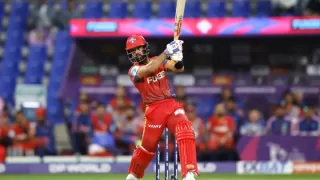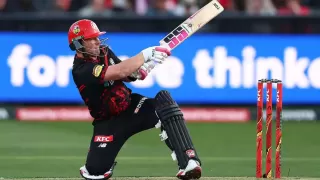The Complete Valorant Map Guide: Callouts and Strategies

Valorant's dynamic map pool continues to evolve, keeping gameplay fresh and challenging for players at all skill levels. Whether you're dropping into casual matches or grinding the competitive ladder, mastering every map's callouts and strategies is essential for climbing the ranks. Let's break down everything you need to know about Valorant's current map rotation and how to dominate on each battleground.
Current Map Pool (2025)
As of the latest update with Season 2025 Act 4, Valorant's active competitive and unranked map pool consists of seven maps in rotation:
- Abyss - The newest addition (June 2024)
- Bind - Recently returned to rotation
- Ascent - A mainstay since Valorant's launch
- Haven - The unique three-site map
- Icebox - Vertical gameplay specialist
- Lotus - Complex rotating doors map
- Sunset - Mid-focused design with tight angles
Split and Pearl have been temporarily removed from competitive play, though you might still encounter them in alternate game modes like Unrated or Deathmatch.
Map Breakdown: Bind
Layout & Key Features
Bind distinguishes itself with two bombsites connected by one-way teleporters instead of a traditional mid area. These teleporters create unique rotation possibilities but generate loud, globally audible noise cues when used.
The map features tight chokepoints leading into both sites, making utility usage critical for successful attacks. Recent updates have adjusted cover on A site and reworked Shower timings to improve attacker options while maintaining defensive integrity.
Essential Callouts
Understanding callouts is crucial for clear team communication:
- A Site Area: Short A, Bath (Showers), A Site, Truck, U-Hall (also called Lamps)
- B Site Area: B Long, Hookah, B Site, Elbow, Garden (sometimes called Octagon)
- Teleporters: A Short ↔ B Long teleporter, B Short ↔ A Lobby teleporter
Pro teams often use shorthand callouts in high-pressure situations - "Lamps" instead of U-Hall or "Showers" instead of Bath. Learning these alternative names helps when queuing with different players.
Meta Agent Composition
The most effective team composition on Bind typically includes:
A double controller setup with Viper paired with either Brimstone or Omen provides maximum site control. Fade or Sova delivers crucial information gathering. Raze excels at clearing tight spaces with her utilities, while a sentinel like Killjoy or Cypher anchors sites and watches flanks.
Attack Strategies
A Site Execution
When attacking A, establish mid-control before splitting between Shower and A Short. Place smokes blocking vision from Heaven and Truck positions while pressuring U-Hall with flashpoint initiators.
The most successful teams coordinate utility usage - have your controller smoke Heaven and Truck simultaneously while your duelist creates space through Short A. Your initiator should clear U-Hall (Lamps) angles with reconnaissance abilities.
B Site Execution
For B site attacks, teams must control Hookah with heavy utility investment. Coordinated flashes and smokes are necessary to push through this tight chokepoint. Alternatively, apply pressure through B Long while maintaining teleporter control for quick rotations.
Advanced teams will sometimes fake using teleporters deliberately, baiting defenders into rotating before hitting the opposite site.
Defense Setups
Standard defensive setups place two players on each site with one flexing based on early information. Sentinel players should position trap utilities to watch silent approaches and teleporter exits.
When playing defense, communication becomes even more critical. Call any teleporter usage immediately so teammates can prepare for potential site hits. Professional teams often leave a single anchor with strong post-plant denial abilities (like Killjoy) while positioning other defenders to quickly rotate.
Post-Plant Positions
After planting on A, hold crossfire angles between Showers and Short A with utility positioned to delay pushes through U-Hall.
For B site post-plants, establish a Hookah and Long crossfire while using utility to slow retakes through Elbow and Garden.
Rank-Specific Approaches
Your approach should adapt based on your rank:
In lower ranks (Iron-Gold), focus on learning basic callouts and trading kills effectively. Common mistakes include over-rotating when hearing teleporter sounds and failing to clear critical corners like U-Hall and Hookah.
Mid-tier players (Platinum-Diamond) should develop more aggressive site control strategies and coordinate utility usage. Practice timing your flashes and smokes for site entry, and avoid using teleporters alone.
At higher ranks (Immortal-Radiant), develop adaptive strategies that incorporate quick rotations based on information gathering. Study pro-level setups and learn delayed utility placement to counter lurking opponents.
Technical Mastery
Sound Awareness
Sound cues provide critical information on Bind. Teleporter activation produces global audio that reveals general player movement. Additionally, footsteps echo distinctively in locations like Showers, allowing attentive players to pinpoint enemy positions.
Utility Lineups
Mastering essential utility lineups dramatically improves your effectiveness:
- Sova's recon dart from the edge of A Showers can scan the entire site
- Viper's wall can bisect B site for effective post-plant control
- Brimstone's cross-smokes can simultaneously block A Truck and Heaven
Many players look for shortcuts to improve through questionable methods. While you might encounter websites like https://battlelog.co/valorant-hacks-cheats-aimbot-esp/, legitimate skill development comes through practice, map knowledge, and teamwork - not through shortcuts that risk account bans.
Pro Insights
Recent professional tournaments reveal evolving strategies. At Masters Toronto 2025, teams like FNATIC and Sentinels adapted their Bind approach by aggressively pushing Showers with double initiator compositions.
Statistical analysis from VCT 2025 shows Bind remains slightly defender-sided (53% defender win rate), though innovative Chamber and Viper setups have boosted attacker success rates through coordinated utility usage.
Map Evolution
Bind has undergone several important changes since launch. The most significant recent update (Patch 10.04) rebalanced spawn advantages and smoothed bombsite layouts to provide more options for attackers. The A site cover improvements and B Hookah-to-Garden sightline adjustments have been generally well-received by the community.
Final Thoughts
Mastering Bind requires understanding its unique teleporter-based rotation system and tight chokepoint design. Remember that map knowledge evolves with every patch, so stay current with official updates.
The most successful Valorant players develop comprehensive understanding across all maps in rotation. As you improve on Bind, apply these same analytical approaches to Ascent, Haven, and the rest of the map pool to become a truly versatile competitor in 2025's competitive landscape.
Disclaimer
Possible11 is a sports news platform that provides live scores, player statistics, and tournament updates for informational and educational purposes only. We comply with the Online Gaming Bill, 2025 (India) and do not promote or engage with fantasy sports, betting, or real-money gaming platforms. All content is intended solely to enhance the sports experience. Possible11 is not affiliated with any fantasy or gambling applications and is not responsible for any financial gains or losses incurred on external platforms.












Give Your Feedback